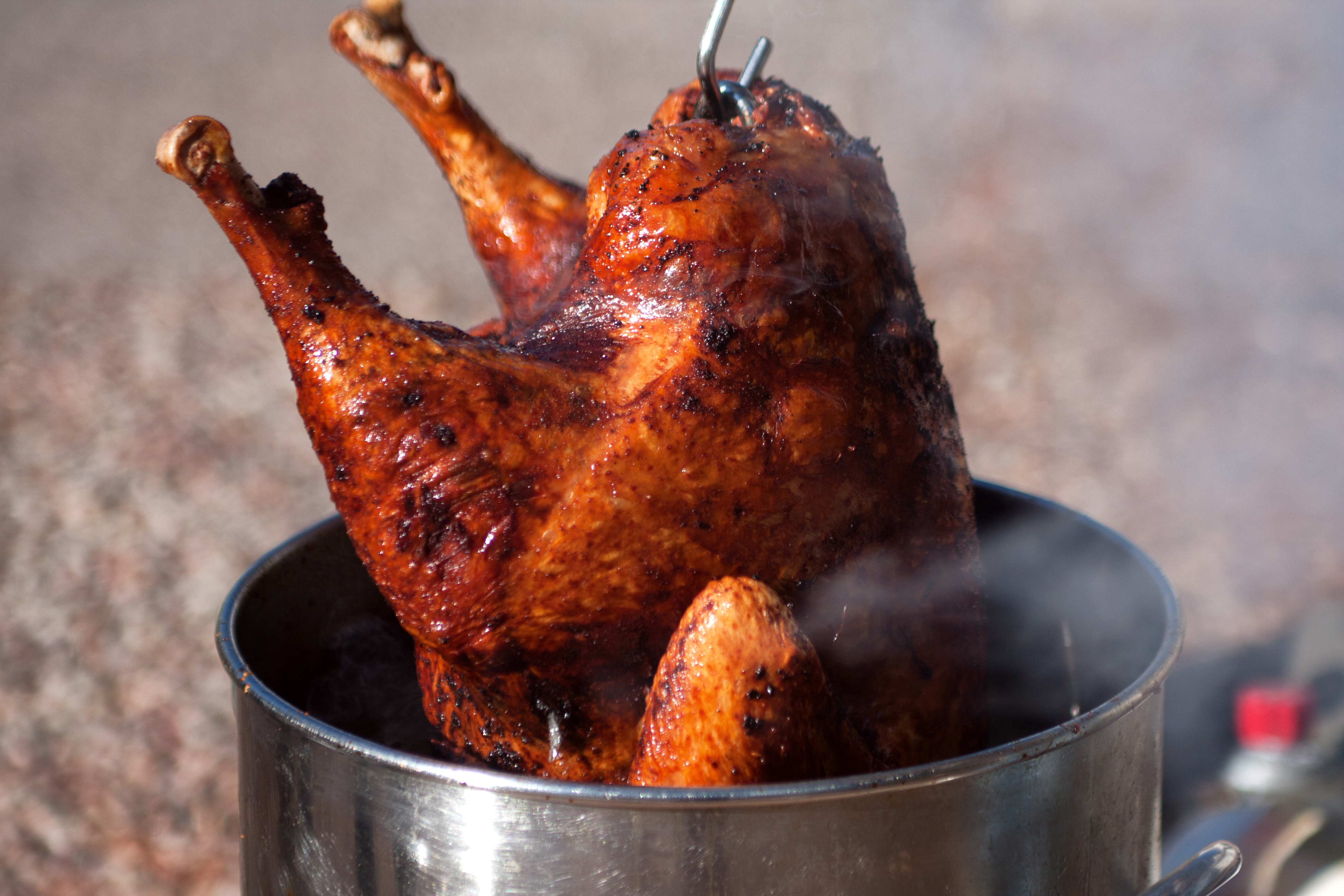
If you’re going to make a turkey, the only real way to do it is to fry it. Not only will it taste better, but you’ll also be able to brag to all your friends that you fried a turkey and lived to tell the tale.
The process isn’t that difficult, but the internet is full of videos of turkey frying gone massively wrong, as in burning-down-your-house wrong. There are a few reasons you could wind up with scorched eyebrows or a charred turkey carcass:
- Using too much oil
- Using a still-frozen turkey
- Using a too-moist turkey
Avoid these mistakes, and you’re more than halfway there. Below are a few more pointers.
No. 1: Measure for the Oil
Using too much oil is the most common calamity in turkey frying. To avoid it, put the turkey in your pot, fill the pot with water to about an inch over the turkey, and then take the turkey out of the pot.
We repeat: Take the turkey out of the pot. Now, mark the level of the water. That’s as high as you’ll want to fill the pot with oil. Peanut oil is preferred for turkey frying. It’s tasty and has a high flash point.
No. 2: Prepare the Turkey
If you remember one thing from chemistry class, it should be this: Oil and water don’t mix. Lowering a frozen or excessively damp bird into hot oil can send foaming oil cascading over the side of the pot. That’s what causes grease fires and burns down the nearby utility shed.
Once your turkey is thawed, remove all the innards, neck, excessive fatty areas, and any plastic used in the packaging. You can rub or inject the bird with butter or seasonings before cooking, but then pat the skin dry inside and out. Then leave it to air dry or dry in the refrigerator for another half hour or so.
No. 3: Don’t Be Stupid
Put the peanut oil into a dry pot before you light the fire. Naturally, you’ve set everything up outside, well away from the house and the utility shed, on a level, non-wooden surface. It’s not raining or snowing, and you’re wearing safety gloves. Have a fire extinguisher on hand just in case.
No. 4: Get to Frying
Preheat the oil to the suggested temperature for your rig, generally about 375 degrees. When you reach it, turn the burner off. Then slowly lower the turkey into the pot.
Once it’s safely in without overflowing and you’ve successfully avoided a raging grease fire, turn the gas back on and cook the bird uncovered. Now all you have to do is the math: Figure about 3 1/2 minutes cooking time per pound, or about 50 minutes for a 14-pound bird.
No. 5: Let It Rest
When you’re done, turn off the gas, raise the turkey up, and let the oil drip back into the pot for a couple of minutes. Then put the turkey in a pan with some paper towels to soak up any excess oil. Let the bird rest for about 25 minutes, then carve and enjoy.
No. 6: Get Rid of the Oil
When the oil is cooled down, dispose of it according to local regulations. However, now that you’ve successfully fried your first turkey, you could strain the oil, store it, and use it again for another go-round.
